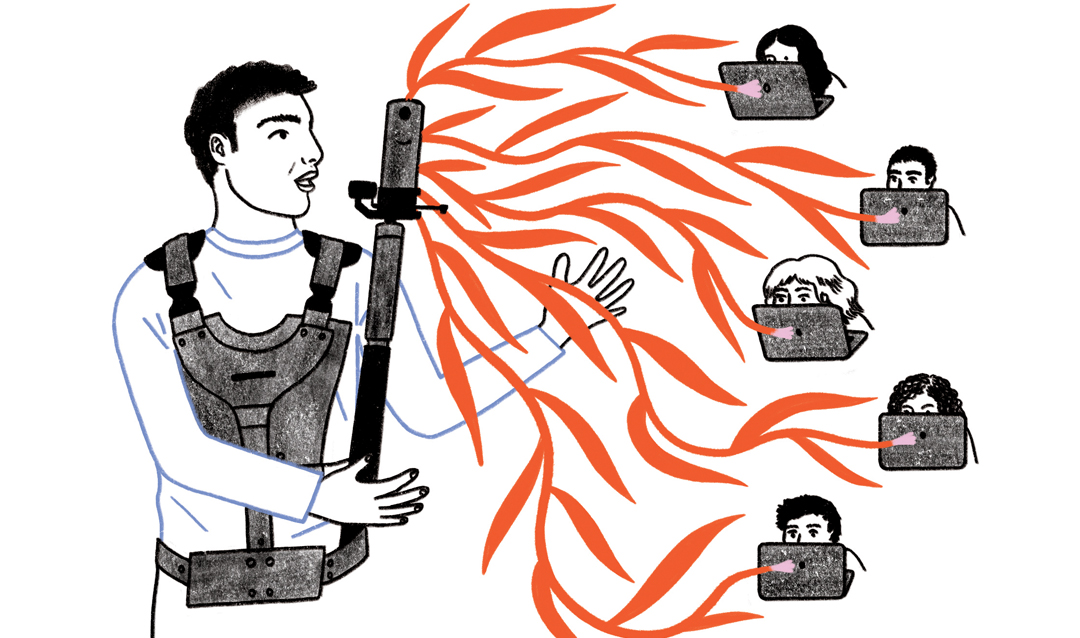Converting an in-person, lecture-based course to an online format is one type of challenge. Doing the same with a lab course is an entirely different one.
Without knowing it at the time, Xiaoji Xu, an assistant professor of chemistry, was preparing for the instructional circumstances of the coronavirus pandemic. Months before universities transitioned to remote instruction and shut down laboratories, Xu and a team of undergraduate students developed a virtual reality tool that can help instructors provide immersive lab-based experiences to students without bringing them into the lab. As online instruction continues for many colleges and universities, the tool could provide a much-needed alternative to direct laboratory access.
Part of the education plan for the National Science Foundation CAREER Award Xu received in 2019 was the development of a virtual reality (VR) chemical educational tool that provides a large classroom of students in situ user experience on advanced research equipment. He worked last summer with a team of students to develop the tool as part of a Mountaintop Summer Experience project.
Xu has decided to share the team’s paper as a preprint because of its potential usefulness to faculty working to adapt instruction to the conditions of the COVID-19 crisis. Computer science and engineering students Yuming Tian ’22 and Haoluo Fu ’21 are listed as first and second authors. Jiawei Liu ’21, a materials science and engineering student, and Le Wang, a graduate student in chemistry, are also listed as co-authors.
Just as VR technology can provide users with an immersive tour of a far-off location, Xu’s tool can be used to bring students into a laboratory experience in real-time, with interactions between students, instructors and teaching assistants.
The tool connects two separate sites—the lab and a lecture site or separately located participants in an online course—via the internet. An instructor in a lab operates the scientific equipment wearing a VR camera and an image-stabilization mechanism, as well as a Bluetooth earphone with a microphone. The VR camera captures a 360-degree view of the instructor’s actions and sends the VR video to a compact laptop computer connected to a cloud-based server. The server streams the VR video to VR goggles, smartphone-based VR goggles or personal computers with internet browsers when goggles are unavailable. The video can be viewed in real-time or recorded for later viewing.
In preparation for the rapid transition to online learning during the Spring 2020 semester, Xu and his teaching assistants, Haomin Wang and Joseph Fialkowski, acted quickly to pre-record and put online VR demonstrations of experiments that students would have been carrying out during the remainder of the physical chemistry lab course. He used the recordings for the remainder of the semester.
The VR tool can be used for demonstration purposes in a variety of STEM disciplines, as well as for outreach to K-12 schools.





